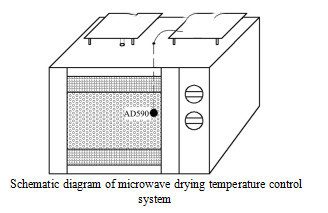The mass transfer of wind and microwave is different from that of the granular layer.
The heat transfer is mainly carried out by convection and heat conduction. The temperature of each particle increases gradually due to the temperature difference between the particle and the drying medium, and then transmits to the interior of the particle to promote the evaporation of water. In the early stage of drying, the dynamic temperature difference between the outside and the inside of each particle is large, and the overall dewatering rate is large; but with the drying process, the dewatering rate decreases slowly because of the increase of heat and mass transfer resistance and the decrease of evaporation cross-section area of the multi-layer structure of each particle. However, the microwave drying of paddy grain not only accelerates the internal water temperature rise and evaporation rate, but also reduces the effect of external heat input on the shrinkage of the pore structure of the outer husk.
The dewatering performance of rice microwave drying equipment is also related to the dielectric coefficients of moisture, protein, amylose and so on. The dielectric coefficients of water are higher than those of protein and amylose. Microwave drying can selectively absorb microwave energy and promote rapid evaporation of moisture in rice grains. Therefore, microwave drying has better thermodynamic strengthening effect than hot air drying. The dehydration rate of microwave drying is faster than that of hot air drying because rice grains are dried by different heat sources. The surface and interior of grains are affected by different thermal forces, which not only promote the internal dewatering process, but also change the internal tissue composition and quality of grains. This will affect the germination quality and vitrification transformation performance of rice embryos. Further analysis is needed.

没有评论:
发表评论